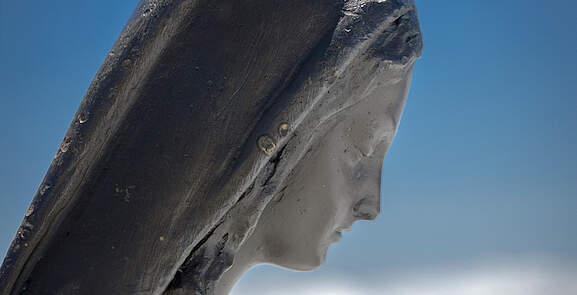
The southern France region around Toulouse, known as the Lauragais, abounds in historical sites. The small town of Saussens has long been a Marian town, and here is why:
Tradition says that Mary appeared to a soldier of the Frankish army (1) near the end of the 5th century. Wounded and exhausted, this man was left behind and to his own devices, at the bottom of the hill of Saussens. He dragged himself to a fountain to drink and clean his wounds. There, he saw the Virgin Mary, who healed him. He then was able to rejoin the battle. Afterward he shared the vision and the miracle he experienced with his companions.
The fountain, renamed Fountain of Our Lady, first became a prayer shrine, then a site of pilgrimages. Devotion to Our Lady of Saussens became so established and widespread that it was solemnly blessed by Pope John XXII in the 14th century.
In the 17th century, the town of Saussens was a recognized Marian shrine. Cardinal de Bonzi, archbishop of Toulouse, gave the shrine a statuette of Our Lady, covered with gold leaf, carefully preserved since 1672. Unfortunately, it was stolen in 2000 and has been replaced by a copy.
The Shrine comprises the church of Saussens and the fountain. The annual Marian pilgrimages attract huge numbers of faithful on these key dates: February 2 (Presentation of Jesus in the temple), March 25 (Annunciation), May 1 (opening of the Marian month, with a mass and torchlight procession), and for the past few years May 31 (closing of the Marian month), September 8 and the following Sunday (Nativity of Our Lady and its octave).
(1) The Franks, a Germanic tribe from what today is Belgium, were the colonizers of Gaul. Following the baptism of their king Clovis (496), they gradually unified the country and gave its name to France.